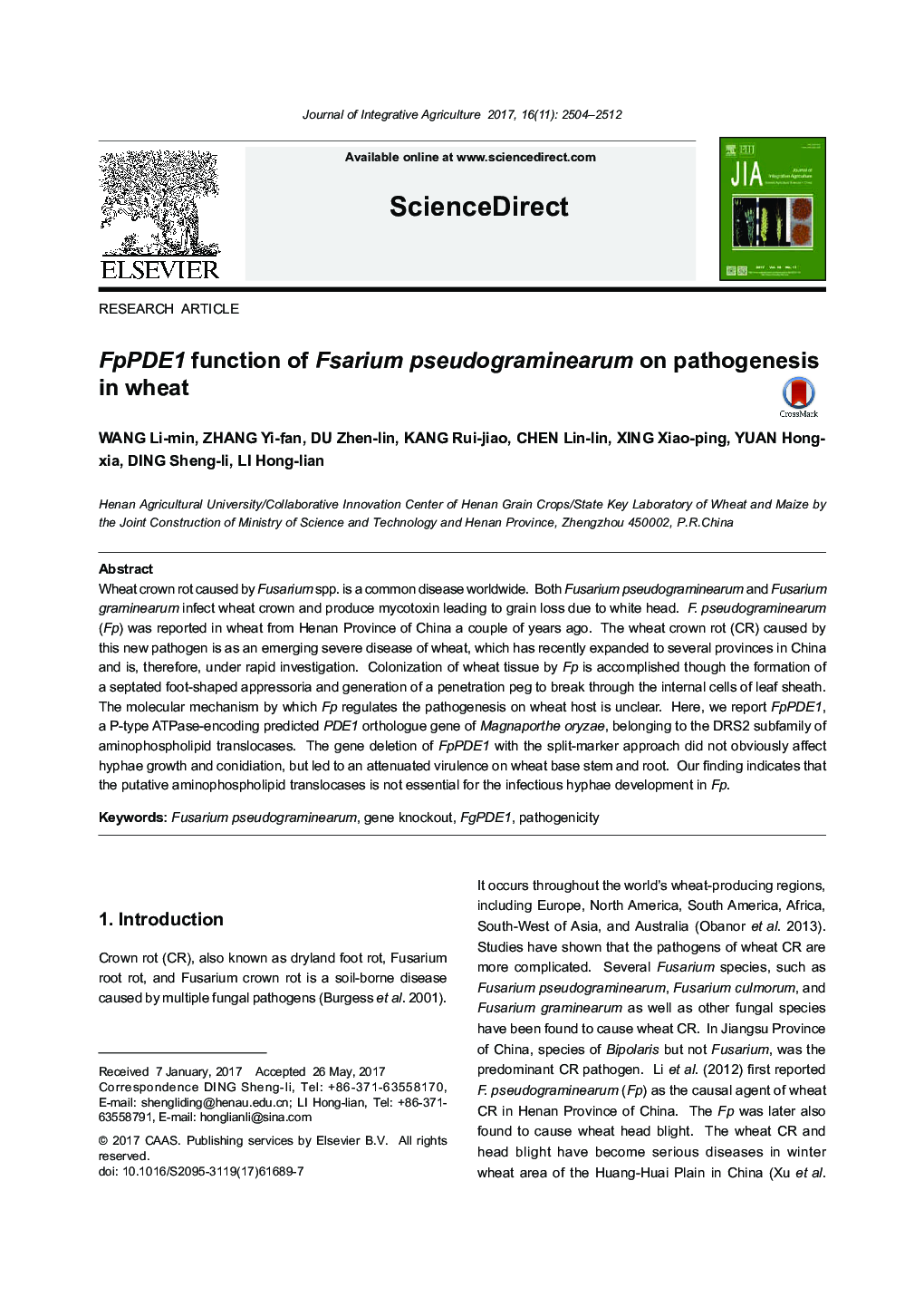| Article ID | Journal | Published Year | Pages | File Type |
|---|---|---|---|---|
| 8875796 | Journal of Integrative Agriculture | 2017 | 9 Pages |
Abstract
Wheat crown rot caused by Fusarium spp. is a common disease worldwide. Both Fusarium pseudograminearum and Fusarium graminearum infect wheat crown and produce mycotoxin leading to grain loss due to white head. F. pseudograminearum (Fp) was reported in wheat from Henan Province of China a couple of years ago. The wheat crown rot (CR) caused by this new pathogen is as an emerging severe disease of wheat, which has recently expanded to several provinces in China and is, therefore, under rapid investigation. Colonization of wheat tissue by Fp is accomplished though the formation of a septated foot-shaped appressoria and generation of a penetration peg to break through the internal cells of leaf sheath. The molecular mechanism by which Fp regulates the pathogenesis on wheat host is unclear. Here, we report FpPDE1, a P-type ATPase-encoding predicted PDE1 orthologue gene of Magnaporthe oryzae, belonging to the DRS2 subfamily of aminophospholipid translocases. The gene deletion of FpPDE1 with the split-marker approach did not obviously affect hyphae growth and conidiation, but led to an attenuated virulence on wheat base stem and root. Our finding indicates that the putative aminophospholipid translocases is not essential for the infectious hyphae development in Fp.
Related Topics
Life Sciences
Agricultural and Biological Sciences
Agricultural and Biological Sciences (General)
Authors
Li-min WANG, Yi-fan ZHANG, Zhen-lin DU, Rui-jiao KANG, Lin-lin CHEN, Xiao-ping XING, Hongxia YUAN, Sheng-li DING, Hong-lian LI,
